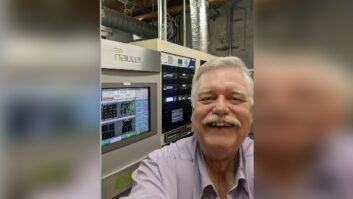
Findings from a study by audience research firm Mark Kassof & Co. seem to show consumers are still confused about what HD Radio is and that stations need to do more to promote the technology.
In a telephone survey of 18–64 year-olds, Kassof found 54% have “heard of” HD Radio, down from 67% in 2008, though the results are better than the 38% who had heard of the digital radio technology in 2006. Included in the 54% is 16% who have only heard of the technology, but don’t know what it is, essentially equal to 2008’s 14%.
The number one image of HD Radio is that it delivers better audio quality, according to the findings. Twenty percent expressed that view, which is essentially flat from 21% in 2008. “But for many, better quality sound is not something they actually know about HD Radio… instead, they tell us, it’s something they infer based only on their knowledge of HDTV,” notes the researcher.

Other indicators of a continued knowledge gap: Only 8% say HD Radio delivers more channels and choices, which is identical to 2008. And 6% have the misconception that HD Radio is satellite radio, again, essentially flat from 7% in 2008.
The research findings are based on 670 telephone interviews, conducted just before the CES show last week. The survey’s margin of error is ±4%.
When asked by Radio World what the industry should do, Kassof said the industry needs a laser-like focus on just three aspects of HD Radio: That it delivers CD-quality sound, that it delivers more channels and choices and that it is free (unlike satellite radio).
And while HD Radio promotion does get these points across, he finds that the HD Radio Website is confusing for consumers, with the mentions of several features, like tagging and traffic.
“In general, the industry needs to increase the frequency and intensity of the highly-focused message,” says Kassof, who suspects the lower awareness of HD Radio, compared to ’08, is because stations are promoting it less.
It is hard getting across what HD Radio is, and I compare that to the early days of satellite radio, when XM and Sirius were running 30-second ads in movie theaters before their respective launches. You saw a satellite hurtling across the sky, the name of the company, and the fact that something was “coming,” but those left people confused.
HD Radio Alliance President Peter Ferrara actually agrees with Kassof that more work needs to be done in terms of promoting the technology, though “We have done a very good job in moving awareness of the technology over the last five years.” He reminded me that when the alliance began there were only two HD Radio tabletops on the market (in addition to auto radios.)
“We’re pretty much at mass adoption now with consumer electronic, retailers and automotive. The next big hurdle is mobile,” he told me. The Alliance is supporting iBiquity’s meeting with cellphone carriers with marketing plans for HD Radio, he points out, noting that alliance efforts have been there all along with automakers as well. Alliance members use their inventory to get deals done, he told me.
Ferrara disagrees that the website is confusing, pointing out that it was redesigned a year ago and is receiving good traffic. “People come to the site and do what we want them to do,” either using the search function or going directly to the buyer’s guide and onto retailer’s sites.
HD Radio progress needs to be measured in terms of the distribution channel, he summed up.











